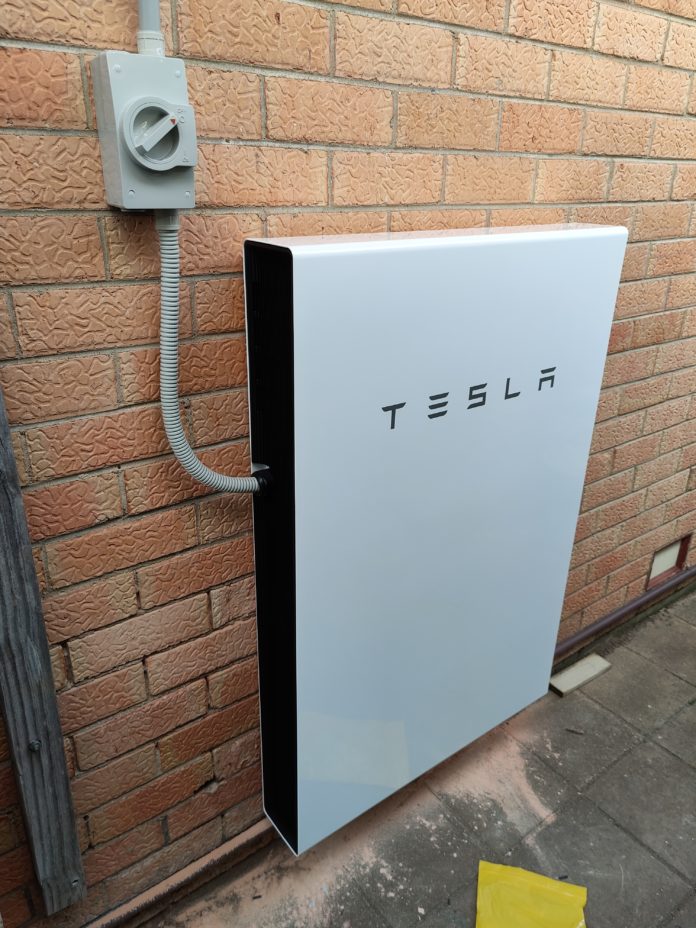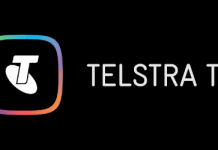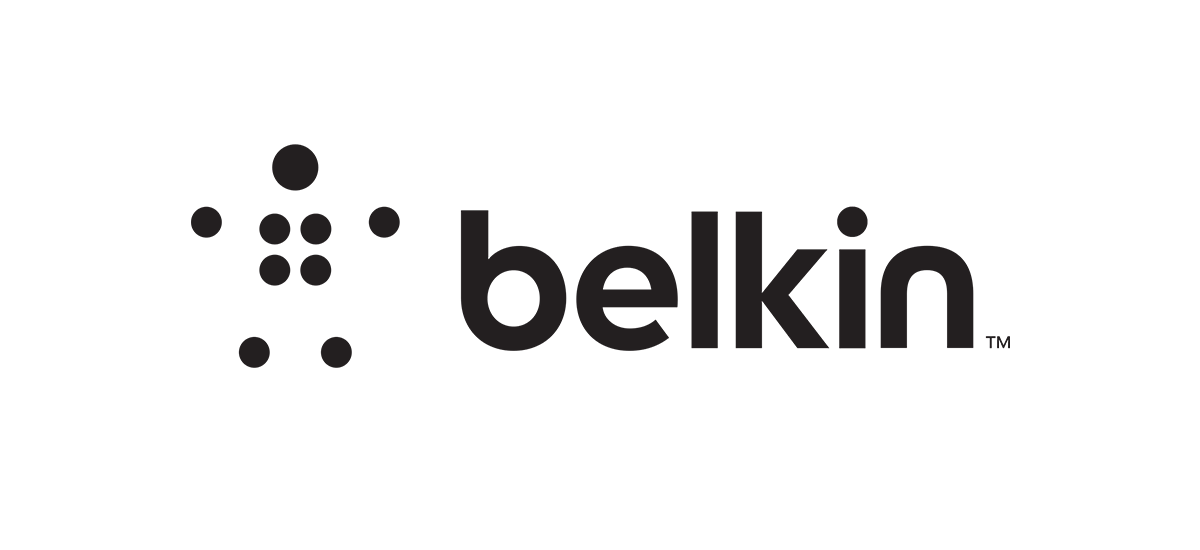A couple of months ago, my wife and I made the decision to make a more conscious effort to reduce our impact on the environment and hopefully have a long term financial benefit. So to compliment the solar system we already have on our home, we began investigating solar batteries. What a minefield that was but finally we came to the decision on the Tesla Solar Wall 2 and it’s been great. It wasn’t just the reduction in our power use from the grid that made me really happy, the Tesla app helped develop our understanding of power usage throughout the day.
The system: Battery and Control box
Clearly being labelled a solar battery, there’s a big ass battery now bolted to the side of my house. Specifically, the Tesla Powerwall 2 which stores — at full capacity — 13.5kWh of power. The box measures a pretty reasonable 1150mm x 755mm x 155mm and weighs in at 125kg.
There’s also a control box that attaches separately to the battery, as near as is practical to your electrical meter. This is critical to the operation of the system as well as the app because this is where the monitoring is done and data fed through for your app — more on this later.
On paper, the concept is pretty simple but in practical terms, it’s exceedingly complex:
- Solar Power generated goes to the house first, battery second and feeds the grid third
- Let’s say you have a 4kw solar system that is not generating enough power, the battery will supplement your needs if there is a charge, otherwise draw from the grid
- If there’s no solar and no battery, the house draws power completely from the grid
In reality, this is happening in real-time, with constantly changing loads and it’s fascinating to see how much power the house is using at any given time. This can be done thanks to the second control box previously mentioned, that requires Internet connectivity: Hardwired, Wi-Fi and cellular which is all set up as part of the installation.
The App
At a user level, this is where the magic happens because it gives you visibility on your investment. Initially, the impression was somewhat mediocre, but in absolute fairness to the system, there wasn’t great solar production weather for a couple of weeks. My wife described me as a child not allowed to play with a new toy until the sun came!
Our house isn’t massively power-hungry, even with heating running. So the first day with reasonable solar production filled the battery by around 3:30 in the afternoon. That energy reserve saw us through until the solar production resumed in the morning. Our first “off-grid” day felt like a big win, which was then followed by two more days like it.
We were able to track this easily through the app which gives you a lot of data including:
- Your power consumption – by monitoring this, you can also understand what devices use high levels of power.
- Your solar production.
- Your battery use (or charging).
- Your grid power use/feed in.
You can view these as individual metrics, or overlaid graphs to get a clearer picture of your day.
There are a few other great little surprises in the app, starting with the battery reserve. This is a percentage of your battery that you can hold in “reserve” in case of a blackout. We have the default setting of 16% which means that when running on battery, at 16% the battery will go into standby and run from the grid if there is no solar production. Only in the event of a blackout will the reserve power be used. Very handy if you’re reliant upon an alarm clock that resets after blackouts with the risk of you oversleeping for work.
The other that — thankfully — we haven’t used yet either, is Stormwatch. When enabled, your Solarwall will (through the Internet connection) monitor for weather events that are likely to cause power outages. Prior to a predictable outage like this, your battery will fill itself to capacity from the grid in order to maintain your power supply should the likely outage occur.
So far so good…
There’s a lot of very smart decisions that have been made in the manufacture and setup of the Tesla Solarwall 2. Not the least of which is the data collection capacity of the app. Investing in solar storage is a very big decision short term for the financial investment, as well as the longer-term impact on your home and the environmental impact you and your family make.
Right now, if you’re buying a solar battery as a purely financial investment – honestly it’s too early. They’re too expensive and you just don’t get massive gains from it financially. For us, the decision was more based around self-sufficiency with a long term financial benefit. The subsidies offered by the SA Government were, however, the deciding factor with around $9000.00 of a $14,000.00 investment returned over two years. So if you’re considering the investment I highly recommend checking out your local arrangements on renewable energy before throwing too much cash around.
Despite all of that, so far so good. To date, we’re really happy with the investment and once we’re into summer with longer days and better solar production, we’ll have plenty of power to spare. We’ve already learned a lot about our power use patterns and there’s undoubtedly more learning to come across the coming six months.



















Hi Phil,
May i ask how you achieved close to 9k in subsidies from the SA government. 6k from the battery scheme i understand but how did the remaining 3k come about please. Im looking at getting a solar battery, unfortunately they have now reduced the rebate to 4k
Good article. What do you use for water heating and cooking??
Oven and Cooktop are both electric.
Currently using a gas hot water system, in the future, we may consider changing that to a solar heat pump.
Hi,
Thanks for nice article, I am in the same situation you were in, I currently have solar panels. So did you save a bit since you didn’t need to install sola panels? How long did the process take for Powerwall 2 installment?
There is absolutely some saving, you’re not paying for the solar panel hardware, inverter and labour etc.
We’ve had the solar since 2013, so it’s done very well for us already.
We signed in May, installed in August – There are delays due to the subsidies currently in place creating quite the rush for batteries!
I might have missed it but I didn’t see what the rating of your combined solar unit is in Kw? Very interesting and informative article.
We’ve got 4.5kW of panels – Would have put more on but don’t have the roof space.
That’s one big *UPS* you’ve got there!
Sounds handy mate , i love the redundancy/storm bit , we have a normal fridge and full size freezer to keep two or three weeks worth of food in , i`m not a prepper , but i just hate shopping 🙂 , and as it turned out in covid times it has come in handy , but if there is a blackout it is panic stations to fire a generator to save all that food . So the powerwall would come in handy there with a bit of solar too . We just need a house more suitable for solar… Read more »
An informative article and I compliment you on it, thanks. However, in your sentence, “So to compliment the solar system…” you should have used the word “complement”. 🙂
So it cost you 5k with the subsidies. What are your monthly/annual electric bills now?
At the moment, we haven’t had a full quarterly cycle since the installation. On good days, we’re feeding back with no grid power consumption so I hope the bills will be zero, in summer I’m confident we’ll see credits due to good power production.
Except for that standing charge of course… For us, our standing charge is highly than our usage, so it makes little sense to get solar/battery unless we could go fully off grid.
To a large extent, I agree!
We’ve gone since last Tuesday without using any power from the grid but unfortunately, we don’t produce enough power in winter to go off-grid.
So we’ll — by my calculations — generate credit in summer, which we’ll use in Winter to a neutral annual cost.
Great write up, thanks!
Are you participating in a Virtual Power Plant at all? VPP’s appear to be a viable way of getting better value from excess power and standard grid feed-in rates, but information about them appears to be limited, with each operating very differently, so it would be good to hear of any experiences.
Yes, we are. Be careful though – there are some plans that are load sharing, so if you’re like us with low power use: These aren’t viable. We chose to go with the option to still pay for power at a PAYG rate. Haven’t had our first bill yet… more to come!
I’m in the AGL VPP here in Adelaide, I had a Tesla Powerwall 2 installed at our holiday house for $4500, which I thought was a great deal.
Hi Paul,
Was this after rebates?
Yes, this was after the $6k SA state government rebate (now reduced